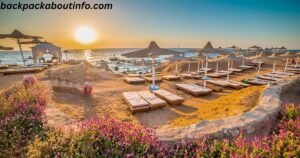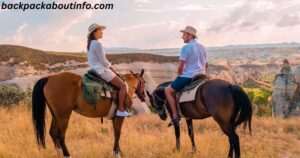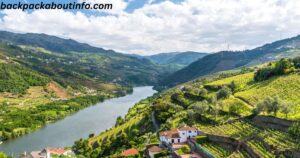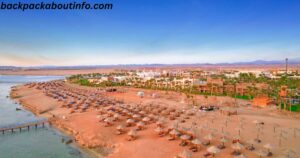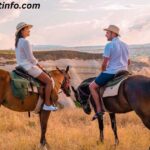Are you ready for an epic journey that combines the glitz of Sin City with the jaw-dropping natural wonders of one of America’s most stunning national parks?
Buckle up, because we’re about to take you on an awesome Las Vegas to Zion National Park road trip that’ll leave you breathless and craving more.
This road trip isn’t just a drive; it’s a voyage through diverse landscapes, rich history, and incredible natural beauty.
Perfect for USA travelers looking to experience the best of the Southwest, this adventure packs a punch whether you’re a nature enthusiast, a photography buff, or just someone in need of an unforgettable getaway.
Planning Your Las Vegas to Zion National Park Adventure
Before you hit the road, let’s get the nitty-gritty details sorted to ensure your trip is as smooth as the Vegas Strip.
Best Times to Go
While you can make this trip year-round, each season offers a unique experience:
Spring (March to May) brings ideal weather, blooming wildflowers, and moderate crowds. The temperatures range from 60°F to 80°F (15°C to 27°C), perfect for hiking and outdoor activities.
Summer (June to August) is hot, but perfect for water activities in Zion. Be prepared for temperatures soaring above 100°F (38°C) in Las Vegas and the mid-90s°F (mid-30s°C) in Zion.
Fall (September to November) offers comfortable temperatures and stunning fall colors. Expect daytime highs in the 70s°F to 80s°F (21°C to 32°C) and cooler evenings.
Winter (December to February) brings quiet trails and potential snow in Zion, but some facilities may be closed. Las Vegas remains mild with temperatures in the 50s°F to 60s°F (10°C to 20°C), while Zion can dip below freezing.
Trip Duration
Ideally, allocate 3-5 days for this road trip. Here’s a sample itinerary:
| Day | Activity |
| 1 | Explore Las Vegas and drive to Valley of Fire State Park |
| 2 | Visit Lake Mead and overnight in Mesquite |
| 3 | Drive to Zion, explore Springdale |
| 4-5 | Full days in Zion National Park |
Packing Essentials
Don’t forget these road trip must-haves:
Comfortable hiking shoes (waterproof if you plan to hike The Narrows), layers of clothing (temperatures can vary greatly between day and night), sunscreen (SPF 50+) and a wide-brimmed hat, refillable water bottles (at least 1 liter per person), snacks and picnic supplies, camera gear (don’t forget extra batteries and memory cards), National Parks Pass (if you have one), first aid kit, binoculars for wildlife spotting, and a portable phone charger.
Vehicle Considerations
While a standard car will suffice for this trip, consider renting an SUV or a vehicle with higher clearance if you plan on exploring any unpaved roads. Always check your vehicle’s condition before setting out, especially the tires and fluids.
If you’re renting, opt for unlimited mileage as you’ll be covering quite a distance. Also, consider getting roadside assistance coverage for peace of mind.
Starting Point: Las Vegas

Before you leave the neon lights behind, take some time to enjoy Sin City. Here are some quick tips:
Catch a show: Cirque du Soleil’s “O” at the Bellagio is a water-themed masterpiece. Book in advance to secure good seats.
Enjoy the views: Head to the Stratosphere Tower for panoramic city vistas. Try the SkyJump if you’re feeling adventurous!
Indulge in world-class dining: Try Joël Robuchon at MGM Grand for an unforgettable meal. For a more budget-friendly option, the Bacchanal Buffet at Caesars Palace offers an impressive array of cuisines.
Explore Fremont Street: Experience the old Vegas charm and enjoy free live music under the LED canopy.
Visit the Neon Museum: A unique outdoor collection showcasing iconic Las Vegas signs.
When it’s time to hit the road, Harry Reid International Airport offers numerous car rental options. Compare prices and book in advance for the best deals. Major companies like Enterprise, Hertz, and Avis are all represented.
“Las Vegas looks the way you’d imagine heaven must look at night.” – Chuck Palahniuk
The Journey Begins: Las Vegas to Valley of Fire State Park
Distance: Approximately 50 miles Driving Time: About 1 hour
As you leave the glittering lights of Vegas behind, your first stop is the aptly named Valley of Fire State Park. This geological wonderland is a mere hour’s drive from Las Vegas, but it feels like you’ve landed on Mars.
Why Valley of Fire is a Must-See Stop
Valley of Fire boasts some of the most vibrant and otherworldly rock formations you’ll ever see. The park gets its name from the fiery red sandstone formations, which look like they’re ablaze when the sun hits them just right.
The area has been inhabited for over 11,000 years, and you can still see petroglyphs etched into the rocks by ancient peoples. It’s a photographer’s paradise and a geologist’s dream come true.
Top Sights and Short Hikes
Fire Wave Trail: A 1.5-mile round trip hike that leads to a stunning wave-like rock formation. The striated pink and white sandstone creates a mesmerizing pattern that’s incredibly photogenic.
Elephant Rock: A natural arch resembling an elephant, easily accessible from the east entrance. It’s a quick stop but well worth it for the unique photo opportunity.
Petroglyph Canyon Trail: A short 0.75-mile round trip showcasing ancient rock art. Bring binoculars to get a closer look at the intricate designs.
White Domes Loop: This 1.1-mile loop offers a bit of everything – narrow canyons, colorful rocks, and even an old movie set.
Rainbow Vista: A short walk to a viewpoint overlooking a vast area of multicolored sandstone.
Photography Tips
Golden Hour: Visit early morning or late afternoon for the best light. The low sun angle brings out the vibrant colors of the rocks.
Use a Polarizing Filter: This will help reduce glare and enhance the rich colors of the rocks. It’s especially useful for bringing out the blue sky against the red rocks.
Include People for Scale: The massive rock formations are even more impressive when you show their size relative to a person.
Try Long Exposures: If you visit during a full moon, try some night photography. The moonlit rocks create an otherworldly scene.
Protect Your Gear: Bring a brush and microfiber cloth to keep your lens free from dust and sand.
Read this Post: Traveling to Cabo San Lucas
Scenic Route Option: Lake Mead National Recreation Area
For those with extra time, taking the scenic Northshore Road through Lake Mead National Recreation Area is well worth the detour.
Highlights Along the Way
Redstone Dunes Trail: A short hike showcasing vibrant red rocks. The contrast between the red sand and the blue lake is stunning.
Boulder Beach: Perfect for a picnic with a view of the lake. You can also rent kayaks here for a quick paddle.
Hoover Dam: A feat of engineering that’s not to be missed. Take a tour to learn about its construction and significance.
Rogers Spring: A desert oasis with a year-round 82°F (28°C) spring. It’s a refreshing stop on a hot day.
Wildlife Spotting
Keep your eyes peeled for desert bighorn sheep, especially near the lake’s edge. You might also spot coyotes, kit foxes, and various bird species. The best times for wildlife viewing are early morning and late afternoon.
Bring binoculars and a wildlife guidebook to enhance your experience. Remember to maintain a safe distance from all wildlife and never feed the animals.
Overnight Stop: Mesquite, Nevada

After a day of exploration, Mesquite offers a perfect place to rest and recharge. This small city on the Nevada-Arizona border provides a taste of local flavor and some fun attractions.
Where to Stay
Eureka Casino Resort: Offers comfortable rooms and on-site dining. The pool area is a great place to relax after a day of hiking.
Holiday Inn Express & Suites: A reliable choice with free breakfast. The rooms are spacious and clean.
Virgin River Hotel & Casino: A budget-friendly option with a more local vibe.
Dining Options
Gregory’s Mesquite Grill: Try their famous prime rib or opt for the fresh catch of the day.
Los Lupes Mexican Restaurant: Authentic Southwestern flavors in generous portions. The chili rellenos are a local favorite.
Bella’s Pizzeria: If you’re craving Italian, their wood-fired pizzas are excellent.
Things to Do in Mesquite
If you have some extra time, consider these activities:
Mesquite Fine Arts Center: Browse local art exhibits and maybe pick up a unique souvenir.
Conestoga Golf Club: If you’re a golf enthusiast, this scenic course offers beautiful desert views.
Mesquite Heritage Museum: Learn about the area’s pioneer history and early settlers.
Crossing State Lines: Arizona and Utah
As you continue your journey, you’ll cross briefly into Arizona before entering Utah. The highlight of this stretch is the Virgin River Gorge.
The Virgin River Gorge Drive
This 20-mile stretch of I-15 is often described as one of America’s most spectacular interstate drives. The road winds through steep red rock cliffs, following the course of the Virgin River.
“The Virgin River Gorge is like a mini Grand Canyon, but you get to drive through it!” – Anonymous road tripper
The gorge is a testament to the power of water erosion, having been carved over millions of years. As you drive, you’ll cross the river several times on bridges that offer stunning views of the canyon below.
St. George, Utah
Make a stop in St. George to stretch your legs and soak in some pioneer history. This charming city offers a blend of outdoor adventure and cultural attractions.
St. George Temple: Visit the oldest operating temple of The Church of Jesus Christ of Latter-day Saints. While you can’t enter unless you’re a member, the grounds are beautiful and open to all.
Pioneer Park: A 52-acre natural park with easy hiking trails and unique rock formations. The “Sugarloaf” is a popular spot for photos.
Brigham Young Winter Home: Tour the historic home of Brigham Young, an important figure in Mormon history.
St. George Dinosaur Discovery Site: If you’re traveling with kids (or are a dinosaur enthusiast yourself), this museum showcases well-preserved dinosaur tracks.
Approaching Zion: Springdale and Final Preparations
As you near Zion National Park, you’ll arrive in Springdale, the gateway town to this natural wonder. Springdale is more than just a place to sleep; it’s a destination in its own right with art galleries, local shops, and excellent dining options.
Where to Stay in Springdale
Zion Lodge: The only in-park lodging, offering a truly immersive experience. Book well in advance, especially for summer visits.
Cable Mountain Lodge: Luxurious rooms with stunning views of the park. The on-site spa is perfect for relaxing after a day of hiking.
Zion Canyon Campground: For those who prefer to sleep under the stars. It offers both RV and tent sites with amenities like showers and a swimming pool.
Desert Pearl Inn: A beautiful property with riverside rooms and a large outdoor pool.
Avoiding Crowds and Parking Hassles
Arrive early, especially during peak season (summer months). The park can fill up by mid-morning.
Use the free Springdale shuttle to reach the park entrance. It runs frequently and stops at most hotels and campgrounds.
Consider visiting less popular areas of the park, like the Kolob Canyons section.
If possible, plan your visit for weekdays, which tend to be less crowded than weekends.
Dining in Springdale
After a day of adventure, you’ll have worked up an appetite. Here are some top picks:
Bit & Spur Restaurant & Saloon: Known for their Mexican-inspired dishes and craft beers.
Oscar’s Cafe: Great for hearty breakfasts and burgers.
Spotted Dog Cafe: Offers more upscale dining with a focus on locally-sourced ingredients.
Exploring Zion National Park
You’ve made it to the crown jewel of your road trip! Zion National Park is a wonderland of towering cliffs, narrow canyons, and diverse wildlife.
Must-See Sights and Trails
Angels Landing: A strenuous 5.4-mile round trip hike with chain-assisted sections, offering breathtaking views. Not for those with a fear of heights!
The Narrows: Wade through the Virgin River between towering canyon walls. You can do an easy bottom-up hike or get a permit for the full top-down experience.
Emerald Pools: A series of pools and waterfalls, suitable for all skill levels. The trail is 3 miles round trip to the upper pool.
Observation Point: A challenging 8-mile round trip hike that rewards you with a bird’s eye view of Zion Canyon.
Weeping Rock: A short but steep 0.4-mile round trip to a rock alcove with dripping springs.
Using the Park Shuttle System
During peak season (March through November), private vehicles are not allowed on the Zion Canyon Scenic Drive. The park’s shuttle system is efficient and free, stopping at all major trailheads and viewpoints.
Shuttles run frequently, usually every 7-10 minutes. The first shuttle from the Visitor Center typically leaves at 6:00 AM.
The last shuttle from the Temple of Sinawava (stop 9) back to the Visitor Center is usually around 8:15 PM. Check the current schedule at the Visitor Center, as times can vary by season.
Hidden Gems
Canyon Overlook Trail: A short but rewarding 1-mile round trip hike with panoramic views. It’s one of the few trails accessible by car year-round.
Watchman Trail: Less crowded than other trails, this moderate 3-mile round trip hike offers great views of the Towers of the Virgin and lower Zion Canyon.
Kolob Canyons: This less-visited section of the park offers scenic drives and secluded hikes. The 5-mile round trip Taylor Creek Trail is a highlight.
Wildlife Watching
Zion is home to a diverse array of wildlife. Keep an eye out for mule deer, often seen grazing in meadows; bighorn sheep on rocky slopes; various bird species, including the endangered California condor; and small mammals like rock squirrels and ringtail cats.
Remember to maintain a safe distance from all wildlife and never feed the animals.
Practical Tips for Your Las Vegas to Zion Road Trip
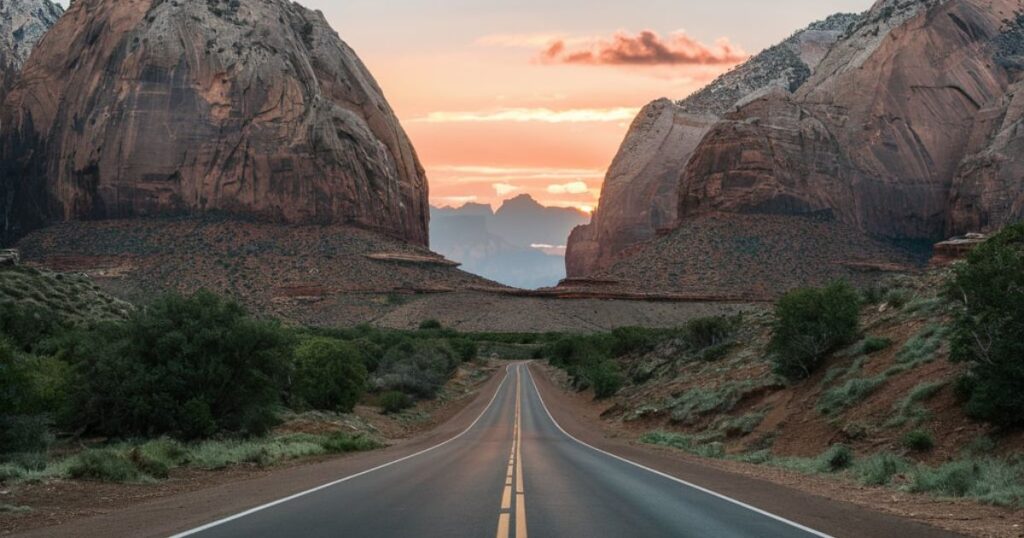
Driving Safety: Stay alert for wildlife, especially at dawn and dusk. Keep your speed in check, particularly on winding roads.
Gas Stations: Fill up in larger towns like St. George, as options are limited near the park. The last reliable gas station before Zion is in La Verkin.
Must-Have Apps: AllTrails for hiking info and offline maps, GasBuddy for finding the best fuel prices, and the National Park Service app for up-to-date park information.
Water Safety: If hiking in The Narrows, check weather forecasts and flash flood warnings. The visitor center can provide current conditions.
Leave No Trace: Pack out all trash, stay on designated trails, and respect wildlife to preserve the park for future visitors.
Conclusion
From the neon lights of Las Vegas to the towering cliffs of Zion, this road trip offers an incredible diversity of experiences. You’ll witness the raw beauty of the American Southwest, from otherworldly rock formations to lush river canyons.
Whether you’re an adventure seeker, a nature lover, or simply in need of an escape, the Las Vegas to Zion National Park road trip delivers an unforgettable journey.
This trip is more than just a vacation; it’s a chance to connect with nature, challenge yourself, and create lasting memories. The contrast between the human-made wonders of Las Vegas and the natural majesty of Zion provides a unique perspective on the diverse beauty of the American landscape.
So pack your bags, grab your camera, and hit the road. The adventure of a lifetime awaits! Remember to respect the environment, stay safe, and take plenty of photos to commemorate your journey.
Have you done this road trip before? Do you have any tips or favorite spots to share? Let us know in the comments below!


